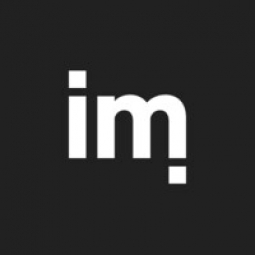下载PDF
Large Healthcare Organization Enhances Patient Data Security with Imperva
技术
- 分析与建模 - 机器学习
- 网络安全和隐私 - 应用安全
适用行业
- 医疗保健和医院
- 国家安全与国防
适用功能
- 采购
- 质量保证
用例
- 网络安全
- 篡改检测
服务
- 网络安全服务
- 系统集成
挑战
该医疗保健组织是美国最大的非营利医疗保健系统之一,面临着保护大量患者数据的挑战。卫生系统中有超过 400,000 名员工,该组织必须管理一个涵盖结构化数据、非结构化数据和存储在云中的数据的庞大环境。该组织必须在临床医生按需访问患者数据的需求与数据泄露的风险之间取得平衡。 2016 年,该组织启动了一个多年期项目,以加强整个组织内患者数据的保护。然而,项目早期的一次数据安全事件迫使该组织重新评估其优先事项。
关于客户
该客户是美国最大的非营利医疗保健系统之一,在六个州的数十家医院和学术医疗中心拥有超过 50,000 名员工。该组织致力于为患者提供医疗服务,无论他们身在何处,无论是在诊所、通过移动设备还是通过电话。为了实现其使命,该组织严重依赖数据,数据在改善患者护理(从诊断到治疗和疾病预防)方面发挥着至关重要的作用。该组织拥有一个庞大的环境,涵盖结构化数据、非结构化数据和存储在云中的数据。
解决方案
为了应对数据安全事件,该组织将重点转移到保护其最关键的资产,然后系统地将覆盖范围扩大到所有数据库。该组织与 Network Consulting Services, Inc. (NCSi) 合作开发网络安全策略和框架,以保护多种形式的患者数据并降低数据泄露风险。三个月内,Imperva Data Security 覆盖了 20 个关键数据库服务器,同时安全团队构建了支持 15 个关键业务应用程序和 780 多个数据库服务器全面部署的架构。在Imperva 的FlexProtect 许可模式下,组织只需购买数据库服务器的许可证,从而可以在代理完全部署之前设计、构建、部署和测试组织环境的底层Imperva 虚拟架构。
运营影响
数量效益
相关案例.

Case Study
Hospital Inventory Management
The hospital supply chain team is responsible for ensuring that the right medical supplies are readily available to clinicians when and where needed, and to do so in the most efficient manner possible. However, many of the systems and processes in use at the cancer center for supply chain management were not best suited to support these goals. Barcoding technology, a commonly used method for inventory management of medical supplies, is labor intensive, time consuming, does not provide real-time visibility into inventory levels and can be prone to error. Consequently, the lack of accurate and real-time visibility into inventory levels across multiple supply rooms in multiple hospital facilities creates additional inefficiency in the system causing over-ordering, hoarding, and wasted supplies. Other sources of waste and cost were also identified as candidates for improvement. Existing systems and processes did not provide adequate security for high-cost inventory within the hospital, which was another driver of cost. A lack of visibility into expiration dates for supplies resulted in supplies being wasted due to past expiry dates. Storage of supplies was also a key consideration given the location of the cancer center’s facilities in a dense urban setting, where space is always at a premium. In order to address the challenges outlined above, the hospital sought a solution that would provide real-time inventory information with high levels of accuracy, reduce the level of manual effort required and enable data driven decision making to ensure that the right supplies were readily available to clinicians in the right location at the right time.

Case Study
Gas Pipeline Monitoring System for Hospitals
This system integrator focuses on providing centralized gas pipeline monitoring systems for hospitals. The service they provide makes it possible for hospitals to reduce both maintenance and labor costs. Since hospitals may not have an existing network suitable for this type of system, GPRS communication provides an easy and ready-to-use solution for remote, distributed monitoring systems System Requirements - GPRS communication - Seamless connection with SCADA software - Simple, front-end control capability - Expandable I/O channels - Combine AI, DI, and DO channels

Case Study
Driving Digital Transformations for Vitro Diagnostic Medical Devices
Diagnostic devices play a vital role in helping to improve healthcare delivery. In fact, an estimated 60 percent of the world’s medical decisions are made with support from in vitrodiagnostics (IVD) solutions, such as those provided by Roche Diagnostics, an industry leader. As the demand for medical diagnostic services grows rapidly in hospitals and clinics across China, so does the market for IVD solutions. In addition, the typically high cost of these diagnostic devices means that comprehensive post-sales services are needed. Wanteed to improve three portions of thr IVD:1. Remotely monitor and manage IVD devices as fixed assets.2. Optimizing device availability with predictive maintenance.3. Recommending the best IVD solution for a customer’s needs.

Case Study
HaemoCloud Global Blood Management System
1) Deliver a connected digital product system to protect and increase the differentiated value of Haemonetics blood and plasma solutions. 2) Improve patient outcomes by increasing the efficiency of blood supply flows. 3) Navigate and satisfy a complex web of global regulatory compliance requirements. 4) Reduce costly and labor-intensive maintenance procedures.

Case Study
Harnessing real-time data to give a holistic picture of patient health
Every day, vast quantities of data are collected about patients as they pass through health service organizations—from operational data such as treatment history and medications to physiological data captured by medical devices. The insights hidden within this treasure trove of data can be used to support more personalized treatments, more accurate diagnosis and more advanced preparative care. But since the information is generated faster than most organizations can consume it, unlocking the power of this big data can be a struggle. This type of predictive approach not only improves patient care—it also helps to reduce costs, because in the healthcare industry, prevention is almost always more cost-effective than treatment. However, collecting, analyzing and presenting these data-streams in a way that clinicians can easily understand can pose a significant technical challenge.






